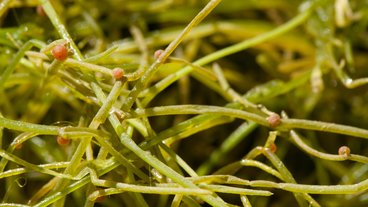
Invasive starry stonewort threatens Big Detroit, Big Cormorant and other Becker County lakes
Zebra mussels may get most of the attention when it comes to aquatic invasives, but the unchecked growth of starry stonewort can really jam up a lake, and Big Detroit and Big Cormorant are in the top 10 lakes in Becker County most threatened by it.
“Starry stonewort is more of a problem than zebra mussels, in some lakes it’s a big problem,” said Karl Koenig, the quality and aquatic invasive species coordinator for the Becker Soil and Water Conservation District. Starry stonewort crowds out native vegetation in lakes, and it tends to flourish in shallower lakes like the ones in Becker County, he said.
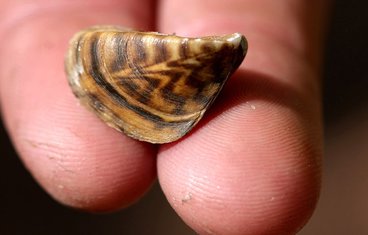
Walleyes grow slower in lakes with zebra mussels, water fleas
Walleyes in northern Minnesota lakes infested by zebra mussels and spiny water fleas are growing at a slower rate than they did before the infestations.
That was the bad news in a recent study by University of Minnesota researchers who looked at nine popular walleye lakes that have been impacted by one or both of the aquatic invasive species.
Researchers (including Josh Dumke at the University of Minnesota Duluth’s Natural Resources Research Institute) looked at walleye growth rates in Lake of the Woods, Rainy, Kabetogama, Vermillion, Red, Cass, Winnibigoshish, Leech and Mille Lacs lakes using 35 years of data gathered by Minnesota Department of Natural Resources fisheries biologists.
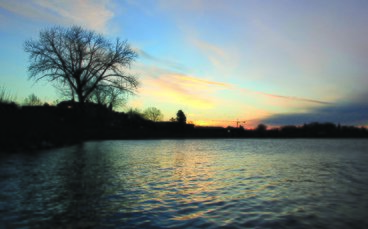
U of M researcher details latest in aquatic invasive species fight
In 2012, a group of researchers at the University of Minnesota joined in the fight against aquatic invasive species and their negative impacts on the state’s lakes, rivers and wetlands.
“I believe strongly that through science and innovation, we can get ourselves out of this problem,” said Nick Phelps, director of the Minnesota Aquatic Invasive Species Research Center at the university.
Phelps, who spoke as a guest during the Jan. 22 Wayzata Rotary Club meeting, detailed the center’s work in developing research-based solutions to reduce the impacts of invasive species and preventing them from spreading.
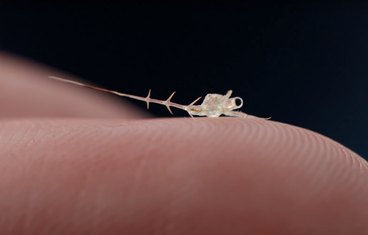
Study: Young walleye are smaller in MN lakes with zebra mussels, spiny water fleas
A new University of Minnesota study has found that, when lakes were infested with two common aquatic invasive species — zebra mussels and spiny waterflea — young walleye didn’t grow as large as quickly, as they did before the invaders arrived.
The Aquatic Invasive Species Research Center study focused on nine large Minnesota lakes that are destinations for walleye anglers: Lake of the Woods, Rainy, Kabetogama, Vermillion, Red, Cass, Winnibigoshish, Leech and Mille Lacs.

Study: Young walleye are smaller in MN lakes with zebra mussels, spiny waterflea
A new University of Minnesota study has found that, when lakes were infested with two common aquatic invasive species — zebra mussels and spiny waterflea — young walleye didn’t grow as large as quickly, as they did before the invaders arrived.
The Aquatic Invasive Species Research Center study focused on nine large Minnesota lakes that are destinations for walleye anglers: Lake of the Woods, Rainy, Kabetogama, Vermillion, Red, Cass, Winnibigoshish, Leech and Mille Lacs.
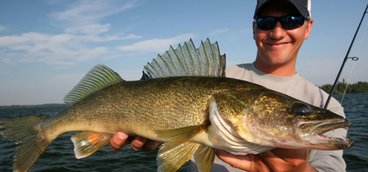
Invasive species slow walleye growth, study says, meaning fewer survive winters
Young walleye growth rates decline by 12 to 14% in Minnesota lakes invaded by zebra mussels and spiny water fleas, researchers concluded in a study published recently.
Led by University of Minnesota Assistant Prof. Gretchen Hansen, it becomes one of the few studies to show impacts of aquatic invasive species on high-level fish such as walleye. A summary of the study in the journal Biological Invasions said slower growth makes it more difficult for baby walleyes to survive.
Fourteen percent might not seem like a big number, Hansen said, but a fish smaller than normal at the end of the first growing season can struggle to survive over winter.
The study out of the Minnesota Aquatic Invasive Species Research Center looked at a 35-year data set of first-year walleye growth in nine of Minnesota’s best walleye lakes. The numbers were routinely recorded over the years by the Department of Natural Resources. In the early years, none of the lakes was invaded. But seven of the lakes became invaded by spiny water fleas or zebra mussels (Mille Lacs was invaded by both).
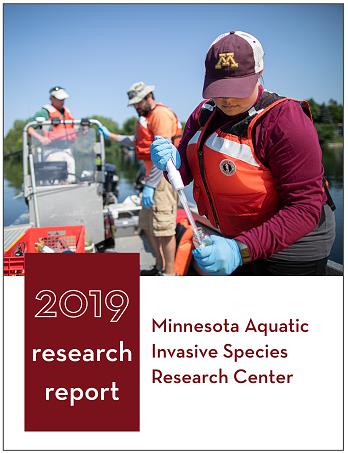
2019 Research Report
Dear friends,
It was another exciting and productive year at the Minnesota Aquatic Invasive Species Research Center! I continue to be inspired by our researchers – from the first semester students to the tenured professors – all working toward a common goal of finding research-based solutions to Minnesota’s AIS problems. As I look back on 2019, it is amazing what has been accomplished.
Six research projects concluded this year, each advancing our scientific understanding and providing new tools and options for managers, professionals, and the public. These projects included work on invasive bighead carp, non-native Phragmites, and zebra mussels – highlights are included in the following pages. The approaches to each project were as varied as the species, but all remained focused on solutions-oriented research and end user engagement. Congratulations to the project teams for getting their work over the finish line and beyond!
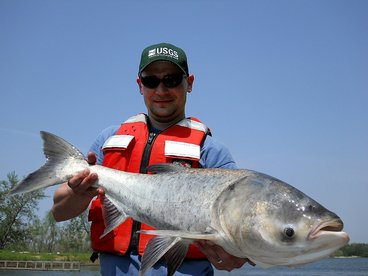
Can a $1 million light-and-sound show stop invasive carp?
Inside a cramped shed alongside a lock and dam on the Mississippi River south of La Crosse, Wis., fisheries biologist Jeff Whitty flipped a switch.
A few yards away, at the foot of the lock, a dozen submerged speakers began blasting a repetitive drumbeat — a Pacman-like whomp, whomp, whomp — while underwater strobe lights began to pulse with bright flashes.
Researchers were about to discover what fish think about the best — and perhaps last — hope for keeping destructive Asian carp out of Minnesota’s rivers and lakes.
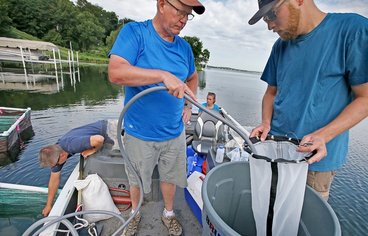
Surf's up on Minnesota's hottest lake sport, but not everyone's on board
Imagine: It’s a hot summer day, and you’re surfing behind a boat as it cuts across the lake.
But this isn’t water skiing. You’re not being pulled by a rope tied to the boat. You’re riding a perfectly curled wake, created by the boat itself.
That’s wakesurfing, a relatively new water sport that’s been gaining popularity on Minnesota lakes.

Researchers target zebra mussel young
A study is continuing in Lake Minnetonka this year on a potential new method to manage zebra mussel populations.
Researchers from the Minnehaha Creek Watershed District (MCWD) and the Minnesota Aquatic Invasive Species Research Center (MAISRC) are testing the use of a copper-based product to reduce the survival of zebra mussel veligers (larvae). By targeting the youngest zebra mussels, it’s hoped the overall zebra mussel population can be decreased. The study, funded by a $30,500 grant from Hennepin County, is the first known field test of its kind in the country.
"We're targeting veligers for this study for several reasons," said Dr. Michael McCartney, MAISRC Research Assistant Professor. "They're in a life stage that is more sensitive to our applications, we can lower the risk of larvae accidentally spreading through recreational boats, and we think we can significantly knock back zebra mussel populations by reducing the number of veligers in the lake."
